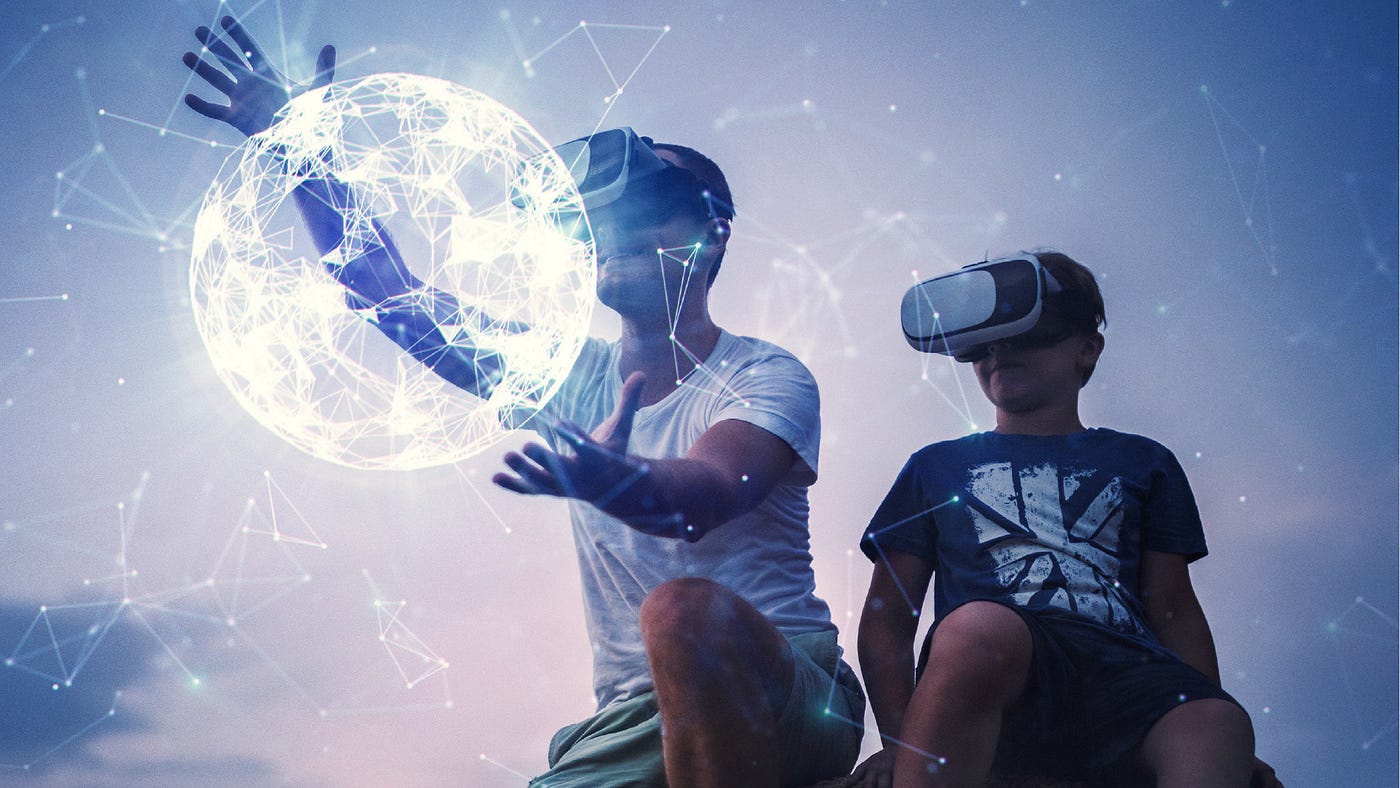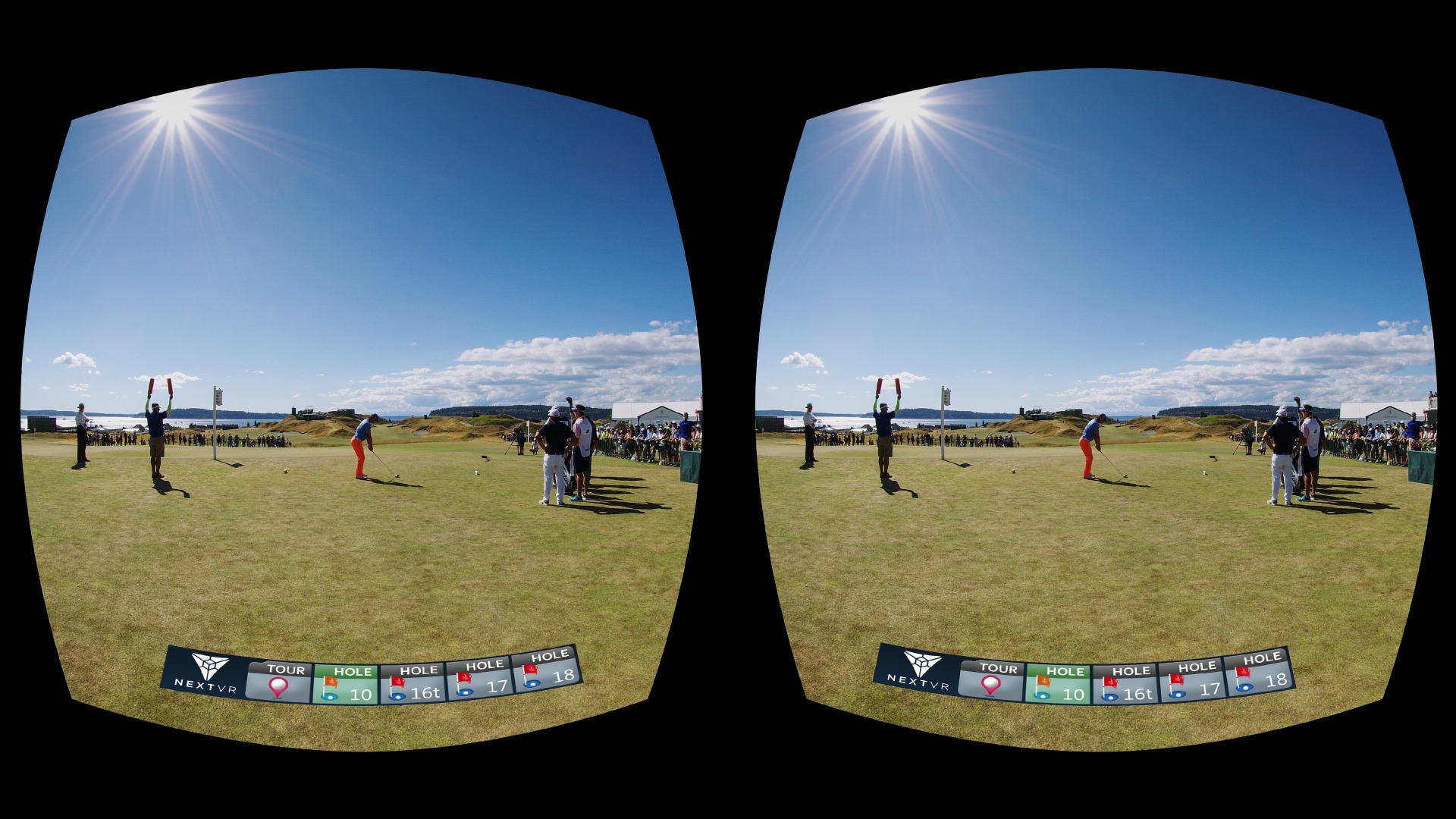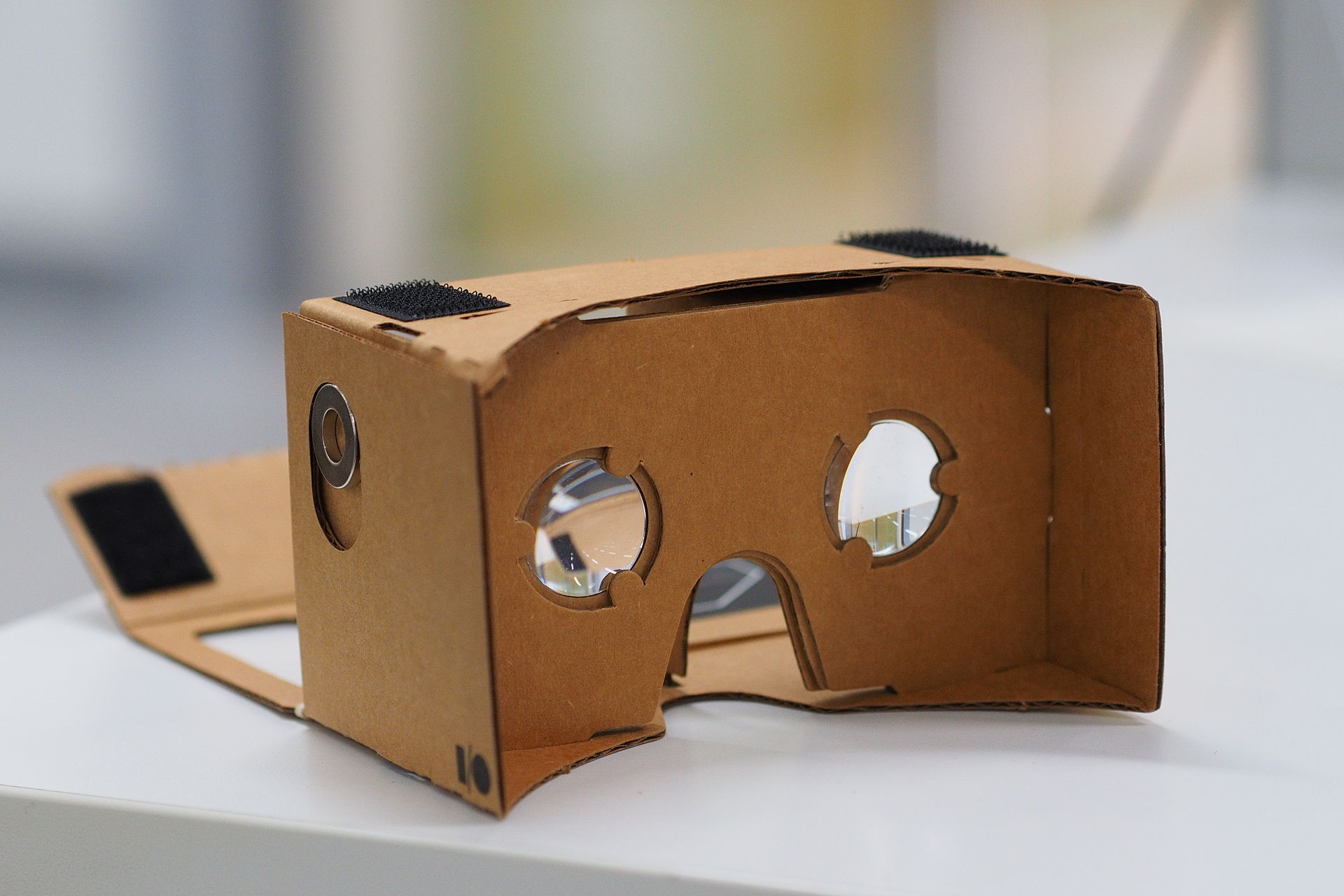Introduction
Virtual reality (VR) is a technology that has taken the world by storm in recent years. It refers to a simulated experience that can be similar to or completely different from the real world. By using a combination of hardware and software, VR provides users with an immersive and interactive experience that can transport them to different locations, environments, or even time periods. This technology has revolutionized various industries and has become an essential part of our lives.
One of the key reasons why virtual reality is important is its ability to offer users an immersive experience. Unlike traditional mediums such as books, videos, or images, VR allows individuals to be fully present in a virtual environment. By wearing a VR headset, users can perceive and interact with their surroundings as if they were physically there. This level of immersion creates a sense of presence and engagement that is unparalleled by any other form of media.
Moreover, virtual reality has made significant contributions in the field of education. It has the potential to transform the way students learn and absorb information. By creating virtual simulations, students can engage in realistic scenarios that enhance their understanding and retention of complex concepts. For example, medical students can practice surgical procedures in a virtual operating room, making mistakes and learning from them without any real-life consequences.
In addition to education, virtual reality has also proven to be invaluable in scientific research. VR technology enables scientists to explore and analyze data in a more visual and interactive way. It allows them to navigate through complex datasets, observe phenomena from different angles, and make discoveries that may have been difficult or impossible to uncover using traditional methods. This has opened up new doors for breakthroughs in various scientific fields.
The healthcare industry has also greatly benefited from virtual reality. It has been used for patient therapy, rehabilitation, and even pain management. For example, virtual reality can be utilized to distract patients during painful procedures or to simulate environments that help with anxiety or phobia treatment. VR technology has the potential to revolutionize the way healthcare is delivered, making it more accessible, efficient, and personalized.
Immersive Experience
One of the key aspects of virtual reality is its ability to provide users with a truly immersive experience. Unlike other forms of media, such as books, movies, or video games, VR allows individuals to not just observe, but actively participate in the virtual world. By wearing a VR headset and using controllers or motion sensors, users can engage in a fully interactive environment that responds to their movements and actions.
Virtual reality creates a sense of presence and realism that can transport users to places they may never have the opportunity to visit in real life. Whether it’s exploring the depths of the ocean, climbing a mountain, or standing in the midst of a bustling city, VR can recreate these scenarios with remarkable accuracy. The level of detail and immersion provided by VR technology truly makes users feel like they are physically present in the virtual environment.
The immersive experience offered by virtual reality has countless applications across various industries. In the entertainment sector, VR has revolutionized gaming by allowing players to step into the game world and interact with characters and environments in a way that was previously unimaginable. This level of immersion enhances the gaming experience and creates a more realistic and engrossing adventure for the players.
Virtual reality is not limited to entertainment, however. It has found its way into fields such as architecture, where it is used to create virtual walkthroughs of buildings and spaces before they are constructed. This allows architects and clients to experience the design in a more tangible way, making it easier to identify and address potential issues before construction begins.
Another industry that benefits from the immersive experience of virtual reality is the tourism sector. With VR, travelers can take virtual tours of famous landmarks, explore distant destinations, and get a taste of what it’s like to be in a different part of the world. This not only serves as a tool for trip planning but also allows individuals with limited mobility or resources to experience the joys of travel.
Immersive experiences provided by virtual reality extend beyond entertainment and tourism. They can also be utilized for training purposes, such as simulating real-life scenarios for professions like pilots, surgeons, and firefighters. By immersing individuals in virtual environments that replicate high-pressure situations, VR enables them to practice and develop skills in a safe and controlled setting.
Education
Virtual reality has the potential to revolutionize the field of education by providing immersive and interactive learning experiences. Traditional learning methods often rely on textbooks, lectures, and static images, which can sometimes be abstract and challenging for students to fully comprehend. However, with virtual reality, students can engage in realistic simulations that enhance their understanding and retention of complex concepts.
One of the key advantages of VR in education is the ability to create virtual environments that replicate real-world scenarios. For example, biology students can explore the inner workings of the human body by “traveling” through different organs, observing their functions, and understanding the intricate details of the biological systems. This hands-on approach to learning not only makes it more engaging but also improves conceptual understanding and long-term retention of knowledge.
Virtual reality can also bridge the gap between theory and practice in various fields. For instance, engineering students can use VR to visualize and interact with complex machinery, allowing them to understand the mechanisms and functions in a more tangible way. It provides a platform for students to experiment, make mistakes, and learn from them without any real-life consequences.
Furthermore, virtual reality can enable students to visit historical sites, ancient civilizations, or even the surface of other planets. With VR, history students can witness significant events unfolding before their eyes, bringing the past to life in a way that textbooks or documentaries cannot emulate. This immersive experience not only sparks curiosity and engagement but also fosters a deeper appreciation for history and culture.
Special education can also benefit greatly from virtual reality. For students with learning disabilities or those who struggle with traditional teaching methods, VR can offer a tailored and inclusive learning environment. With adaptive features and personalized settings, virtual reality can accommodate different learning styles and provide a more accessible and engaging educational experience.
Additionally, virtual reality enables collaboration and remote learning. With the advancement of VR technologies, students from different locations can come together in a virtual classroom, engage in discussions, and collaborate on projects as if they were physically present. This opens up opportunities for students to learn from educators and peers around the world, fostering a global community of learners.
Overall, virtual reality has the potential to transform education by providing immersive, interactive, and inclusive learning experiences. By creating virtual simulations, VR technology can enhance comprehension, spark curiosity, and inspire a love for learning in students of all ages and backgrounds.
Scientific Research
Virtual reality (VR) technology has made significant contributions to scientific research by offering new ways to explore and analyze data, visualize complex information, and conduct experiments in virtual environments. It has revolutionized the research process, enabling scientists to gain insights and make discoveries that were previously difficult or impossible to achieve using traditional methods.
One of the key advantages of VR in scientific research is the ability to create immersive visualizations of data and simulations. Instead of looking at charts, graphs, or 2D models, researchers can navigate through a virtual representation of the data, observe it from different angles, and interact with it in real-time. This helps to uncover hidden patterns, relationships, and trends that may not have been easily distinguishable using traditional data analysis techniques.
In fields such as astronomy and astrophysics, virtual reality allows scientists to explore and simulate the vastness of space in a more realistic and interactive way. They can navigate through galaxies, witness cosmic events, and understand the complexities of the universe on a whole new level. VR technology enables scientists to conduct virtual experiments and test hypotheses before applying them to real-life scenarios, saving time and resources.
Furthermore, VR opens up new possibilities in the field of molecular biology and chemistry. Researchers can use virtual reality to visualize and manipulate molecular structures, proteins, and chemical compounds. This level of interactivity and immersion aids in understanding the spatial relationships between atoms and molecules, facilitating the design of new drugs, materials, and compounds.
Another area where virtual reality is making significant advancements is in medical research. VR allows researchers to simulate medical procedures, such as surgeries or drug administration, in a controlled virtual environment. This enables them to observe the effects, identify potential issues, and refine techniques before applying them to actual patients. VR also plays a crucial role in medical training, providing aspiring healthcare professionals with realistic hands-on experiences without risk to patients.
Virtual reality is not limited to specific scientific disciplines but has applications across various fields of research. It can be utilized in environmental studies to model and simulate the impact of climate change, in psychology to create controlled experiments and study human behavior, and even in archaeology to recreate ancient civilizations and explore historical sites virtually.
Overall, virtual reality has become an essential tool in scientific research, offering new ways to visualize, analyze, and explore complex data and phenomena. By providing immersive and interactive experiences, VR technology is pushing the boundaries of scientific discovery and enabling researchers to make breakthroughs that have a profound impact on our understanding of the world.
Healthcare
The healthcare industry has greatly benefited from the advancements in virtual reality (VR) technology. VR has proven to be a valuable tool in healthcare settings, offering a range of applications that enhance patient care, medical training, and therapy.
One of the primary uses of VR in healthcare is patient therapy and rehabilitation. Virtual reality can provide a distraction for patients during painful or uncomfortable procedures, such as wound dressings or injections. By immersing patients in a virtual environment that captivates their attention, VR can help reduce anxiety, manage pain, and improve overall well-being.
Beyond distraction, virtual reality can be utilized for therapeutic interventions. Individuals with phobias, anxiety disorders, or post-traumatic stress disorder (PTSD) can engage in exposure therapy in a controlled virtual environment. This enables them to confront and gradually overcome their fears in a safe and controlled manner.
VR also plays a crucial role in physical rehabilitation. By creating virtual scenarios that mimic real-life movements and activities, patients can practice and strengthen their motor skills in a supportive environment. This can be particularly beneficial for individuals recovering from strokes, traumatic injuries, or neurodegenerative diseases.
Moreover, virtual reality has the potential to revolutionize medical training and education. By using VR simulations, aspiring healthcare professionals can practice and refine their skills in a realistic yet risk-free environment. Surgeons can simulate complex procedures, allowing them to develop proficiency and confidence before operating on real patients. VR training can also enhance communication and teamwork in healthcare settings by providing opportunities for interdisciplinary collaboration.
In addition, virtual reality is being used for telemedicine and remote patient care. With VR, healthcare providers can connect with patients in different locations, allowing for virtual consultations, monitoring, and diagnosis. This is especially beneficial for individuals who have limited access to healthcare facilities or are unable to physically travel to see a healthcare professional.
Another application of VR in healthcare is medical visualization. Virtual reality enables physicians, surgeons, and medical students to explore detailed 3D representations of the human body. This assists in understanding complex anatomical structures, surgical planning, and patient education. VR can also facilitate data visualization, allowing medical professionals to navigate through medical imaging data in a more intuitive and immersive way.
Furthermore, virtual reality is being explored in pain management and palliative care. By providing engaging and soothing virtual experiences, VR can help individuals manage chronic pain, alleviate symptoms of depression and anxiety, and improve the overall quality of life for patients in palliative care.
Overall, virtual reality is transforming healthcare by enhancing patient therapy, medical training, and telemedicine. Through its immersive and interactive capabilities, VR is improving patient outcomes, facilitating medical education, and redefining the way healthcare is delivered and experienced.
Virtual Tourism
Virtual reality (VR) has opened up a world of possibilities for the tourism industry. It allows individuals to embark on virtual journeys, explore destinations, and experience different cultures without physically being present. Virtual tourism not only provides a level of accessibility to those who may have limitations in traveling but also offers unique opportunities for exploration and discovery.
One of the key benefits of virtual tourism is the ability to visit destinations that may be difficult or impossible to reach in real life. Whether it’s climbing Mount Everest, diving in the Great Barrier Reef, or walking the streets of ancient cities, VR can transport individuals to these remarkable places with remarkable accuracy. This not only satisfies the wanderlust of travel enthusiasts but also provides educational and cultural experiences that broaden horizons.
Virtual reality allows travelers to explore destinations in ways that traditional travel media cannot replicate. Through immersive 360-degree videos and interactive virtual tours, users can get a comprehensive and realistic view of landmarks, attractions, and natural wonders. They can take their time to examine details, change perspectives, and truly immerse themselves in the virtual environment.
Moreover, virtual tourism can serve as a tool for trip planning. By experiencing virtual tours of different destinations, individuals can get a sense of what it’s like to be in a specific location, explore various attractions, and make informed decisions about their actual travel plans. This can save time and resources by narrowing down choices and ensuring that the selected destinations align with personal preferences.
Virtual reality also provides opportunities for cultural immersion. Travelers can engage with local traditions, festivals, and customs through virtual experiences. They can participate in virtual cooking classes, dance performances, or craft workshops, gaining insights and appreciation for the local culture. This cultural exchange fosters understanding and creates connections between people from different parts of the world.
Additionally, virtual tourism opens up opportunities for heritage preservation. VR technology can be used to recreate historical sites and monuments that may have been destroyed or are inaccessible due to various reasons. This allows for the preservation and sharing of cultural heritage, ensuring that future generations can continue to learn and appreciate these valuable historical landmarks.
Virtual reality also has the potential to make travel experiences more sustainable. With VR, individuals can minimize their carbon footprint by reducing the need for long-haul flights and excessive consumption of resources. Virtual tourism promotes eco-friendly travel options and encourages responsible tourism practices.
Overall, virtual tourism offers a unique and immersive way to explore the world, experience different cultures, and plan upcoming trips. By leveraging the power of virtual reality, individuals can satisfy their wanderlust, broaden their horizons, and embark on virtual adventures that transcend the limitations of physical travel.
Gaming and Entertainment
Virtual reality (VR) technology has revolutionized the world of gaming and entertainment, providing an immersive and interactive experience that takes entertainment to new heights. By wearing a VR headset and using motion controllers, players are transported into virtual worlds where they can engage in virtual environments and interact with characters and objects in ways that were previously unimaginable.
One of the key advantages of VR in gaming is the level of immersion it offers. Players can feel like they are truly part of the game world, as they can physically look around, move their bodies, and manipulate objects within the virtual environment. This heightened level of immersion enhances the gaming experience and creates a more realistic and engrossing adventure for the players.
Virtual reality also introduces new possibilities for gameplay mechanics. With the ability to track head movements and gestures, VR enables developers to create innovative and intuitive controls that go beyond traditional keyboard and mouse or controller inputs. Players can physically duck, dodge, and aim, making the gameplay more interactive, challenging, and immersive.
Moreover, VR allows for the creation of entirely new gaming experiences. Virtual reality opens up possibilities for games that are centered around exploration, social interaction, and physical activity. Whether it’s exploring fantastical realms, solving puzzles, or competing in virtual sports, VR gaming offers a wide range of experiences that cater to diverse interests and preferences.
Virtual reality also has the potential to transform the entertainment industry beyond gaming. With VR, individuals can watch movies, concerts, and live events in a more immersive and engaging way. Virtual reality can transport viewers to the front row of a concert, create a virtual movie theater experience, or enable them to interact with virtual celebrities and performers.
Furthermore, VR can be used for simulated reality experiences, such as virtual roller coasters or thrill rides. These experiences offer the adrenaline rush and excitement of real-world theme park attractions without the limitations of physical space or safety concerns. Virtual reality can deliver intense and thrilling experiences in the comfort of one’s own home.
In addition, VR can be a platform for artistic expression and storytelling. Virtual reality experiences can convey narratives and evoke emotions in a more immersive and impactful way. Whether it’s through interactive storytelling or virtual art galleries, VR allows creators to push the boundaries of traditional mediums and engage audiences on a deeper level.
Overall, virtual reality has revolutionized gaming and entertainment by providing an immersive and interactive experience that transcends traditional forms of media. With its ability to create realistic and interactive virtual worlds, VR has transformed the way we play games, consume media, and engage with entertainment, offering endless possibilities for future innovations in the industry.
Job Training
Virtual reality (VR) has emerged as a game-changer in the field of job training, offering realistic and immersive experiences that effectively prepare individuals for various professions. This technology provides a safe and controlled environment for trainees to learn and practice skills without the risks, costs, and logistical challenges associated with traditional training methods.
One of the key benefits of VR in job training is its ability to simulate real-world scenarios. From manufacturing and construction to aviation and emergency response, VR can recreate realistic work environments, allowing trainees to practice tasks and procedures in a virtual setting. This provides them with hands-on experience and familiarity with the work conditions they will encounter in their actual jobs.
Virtual reality technology enables trainees to learn-by-doing, making it an effective tool for skill acquisition and retention. By engaging in virtual simulations, individuals can actively participate in tasks, make decisions, and experience the consequences of their actions. This interactive learning approach enhances understanding and promotes critical thinking, helping trainees develop proficiency in their chosen fields.
Moreover, VR provides a platform for practicing complex or high-stakes procedures. Surgeons, for example, can perform virtual surgeries with haptic feedback, allowing them to develop their surgical skills and techniques before operating on real patients. Similarly, pilots can use VR flight simulators to train and refine their flying abilities, improving safety and reducing the risks associated with on-the-job training.
Virtual reality also facilitates remote training and collaboration. With VR technology, trainees and experts from different locations can come together in a shared virtual space. This enables remote mentoring, real-time feedback, and collaborative learning, making training more accessible and cost-effective. VR brings together the expertise of professionals from around the world, fostering a global community of learners and expanding training opportunities.
In addition, virtual reality is particularly beneficial for high-risk professions where mistakes can have severe consequences. Firefighters, for example, can train in highly realistic VR simulations that replicate dangerous scenarios without putting themselves or others in harm’s way. This allows them to practice emergency response procedures, decision-making, and teamwork, preparing them for real-life situations.
Furthermore, VR can be used to train employees on soft skills, such as communication, leadership, and customer service. Through virtual role-playing scenarios, trainees can practice and develop interpersonal skills essential for successful workplace interactions. VR-based training enables individuals to learn and refine these skills in a safe and controlled environment, boosting their confidence and competence.
Overall, virtual reality has transformed the field of job training by offering immersive and interactive learning experiences. From simulated work environments to remote collaborations and soft skills development, VR enhances training effectiveness, reduces risks, and prepares individuals for real-world challenges in a wide range of professions.
Social Interaction
Virtual reality (VR) technology has the remarkable ability to bring people together and enhance social interaction in unique and immersive ways. While traditional communication mediums rely on text, images, or videos, VR goes beyond the limitations of these formats by creating shared virtual spaces where individuals can interact with each other in real-time, no matter where they are in the world.
One of the key advantages of VR in social interaction is the sense of presence it creates. By wearing a VR headset, users can feel as if they are in the same physical space as others, even if they are miles apart. This level of presence fosters a deeper sense of connection and engagement, making interactions more meaningful and memorable.
Virtual reality allows individuals to communicate and interact with each other using avatars, which are virtual representations of themselves. This enables personal expression and customization, as users can choose their appearance and mannerisms in the virtual space. Avatars can mimic real-life movements and gestures, creating a more natural and immersive social experience.
Moreover, VR provides opportunities for shared experiences and activities. Individuals can participate in virtual events, attend virtual concerts, or engage in multiplayer gaming sessions, all within a virtual environment. This fosters a sense of togetherness and camaraderie, as people can engage in common interests and hobbies, regardless of their geographical locations.
Virtual reality also facilitates cross-cultural interactions and experiences. VR platforms allow individuals from different backgrounds and cultures to connect, communicate, and learn from each other. People can immerse themselves in virtual environments that reflect different cultures, visit virtual museums and art galleries, or participate in virtual language exchanges. This fosters cross-cultural understanding, breaks down barriers, and promotes global connections.
Furthermore, VR can be particularly beneficial for individuals who face challenges with physical mobility or social anxiety. Virtual reality offers a safe and inclusive environment where people can engage in social interactions without the limitations or anxieties they may experience in face-to-face interactions. This technology provides opportunities for individuals to develop social skills, connect with others, and build confidence in a supportive virtual space.
In addition to personal interactions, VR can also be used for remote collaboration and teamwork. Virtual reality platforms enable individuals to work together on projects, brainstorm ideas, and problem-solve as if they were in the same physical room. This promotes collaboration across distances, improves efficiency, and opens up new possibilities for remote work and global collaborations.
Overall, virtual reality has transformed social interaction by creating shared virtual spaces where individuals can connect, communicate, and engage with each other in immersive and meaningful ways. From shared experiences to cross-cultural interactions, VR technology brings people together, fosters connections, and enhances social interactions in ways that were once unimaginable.
Conclusion
Virtual reality (VR) has become an integral part of our lives, transforming various industries and opening up new possibilities for innovation. From immersive experiences to education, scientific research, healthcare, virtual tourism, gaming, job training, and social interaction, VR has revolutionized the way we learn, work, entertain, and connect with others.
One of the key advantages of VR is its ability to provide immersive experiences that transport users to different locations, time periods, or environments. This level of immersion creates a sense of presence and engagement that is unparalleled by any other form of media. In education, virtual reality offers students hands-on experiences and realistic simulations that enhance understanding and retention of complex concepts. VR has also made significant contributions to scientific research, providing new ways to explore data, visualize information, and conduct experiments. In healthcare, VR is used for patient therapy, rehabilitation, remote care, and medical training, improving patient outcomes and accessibility. Virtual tourism enables individuals to explore destinations, experience cultures, and plan trips while reducing the impact on the environment. In gaming and entertainment, VR offers a level of immersion and interaction that enhances the gaming experience and creates endless possibilities for new forms of entertainment. Virtual reality has also transformed job training by providing safe and realistic simulations for skill acquisition and practice in a wide range of professions. Finally, VR fosters connections and collaboration through shared virtual spaces, bringing people together, and enhancing social interaction across distances.
As virtual reality technology continues to evolve, it holds great promise for the future. With advancements in hardware and content development, VR experiences are becoming more realistic, accessible, and affordable. This opens up new opportunities for industries to leverage VR for an even wider range of applications and benefits.
However, challenges remain in terms of accessibility, content quality, and user comfort. As VR technology continues to progress, addressing these challenges will be crucial for its widespread adoption and ongoing success.
In conclusion, virtual reality has had a profound impact on various aspects of our lives, transforming how we learn, work, entertain, and connect with others. With its ability to provide immersive experiences, VR has become an essential tool for education, scientific research, healthcare, entertainment, job training, and social interaction. As technology continues to advance, virtual reality will continue to shape our world, providing new avenues for innovation, exploration, and human connection.

























